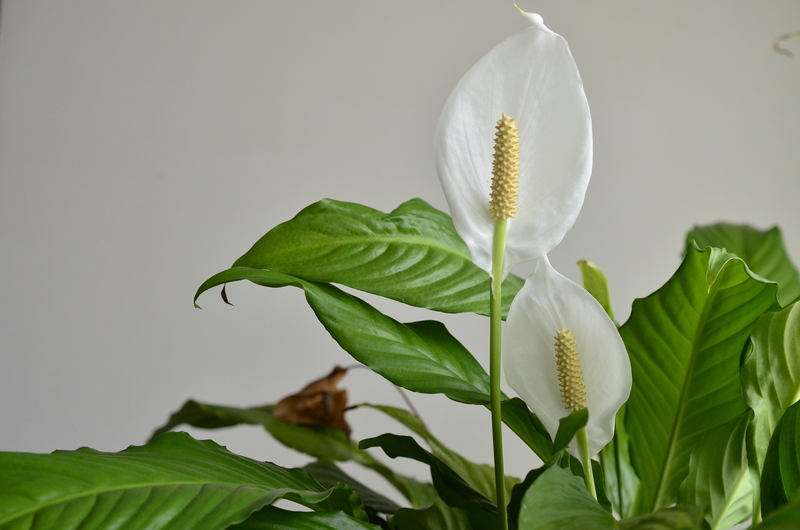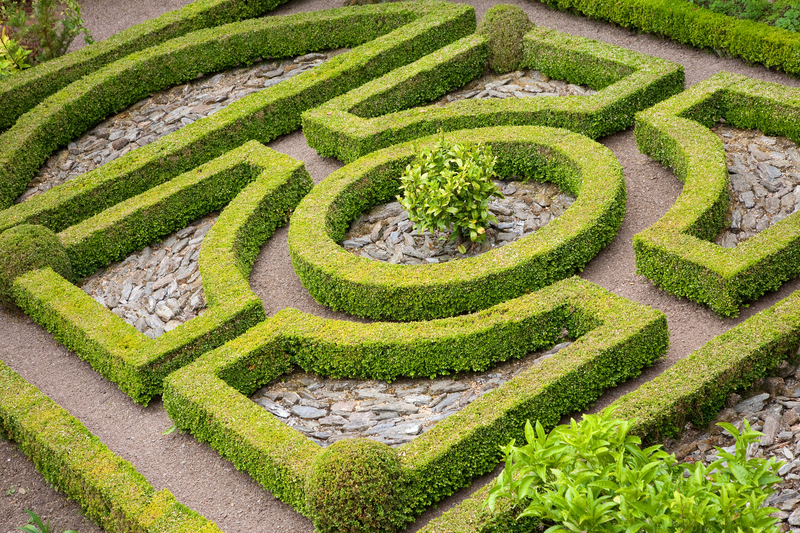A Beginner's Guide to Starting a Container Garden
Posted on 21/08/2025
A Beginner's Guide to Starting a Container Garden
Container gardening has surged in popularity, offering an easy, accessible, and flexible way for people from all walks of life to enjoy the pleasures of homegrown plants. Whether you have a sprawling backyard, a tiny balcony, or even just a windowsill, you can create a lush, productive container garden with a little know-how and creativity. This comprehensive guide will walk you through every step of starting a container garden, from choosing the right pots to harvesting your first crop. Ready to turn your living space into a green oasis? Let's dive in!
Why Start a Container Garden?
There are countless reasons to try container gardening for beginners:
- Space Efficiency: Perfect for renters, apartment dwellers, and those without a traditional yard.
- Control: Manage soil, water, and sunlight more easily compared to in-ground planting.
- Accessibility: Ideal for people with mobility issues, as pots can be raised to comfortable heights.
- Versatility: Grow flowers, vegetables, herbs, and even small fruits in pots, both indoors and outside.
- Pest & Disease Management: Isolating plants reduces the risk of certain pests and diseases.
Whether you want fresh basil by your window or vibrant petunias on your porch, this beginner's container gardening guide will show you how to get started with confidence.

Understanding Container Gardening: The Basics
Container gardening involves growing plants exclusively in pots, planters, or other containers instead of in the ground. This method is suitable for nearly all types of plants when the right conditions are met, making it one of the most versatile gardening techniques available.
- Indoor Container Gardening: Focuses on houseplants, herbs, and edible greens near windows or under grow lights.
- Outdoor Container Gardening: Encompasses patios, balconies, decks, and garden spaces where pots can flourish in natural sunlight.
Tailor your container garden to your lifestyle, available space, and plant preferences for a rewarding growing experience.
Step-by-Step Guide: Creating Your Own Container Garden
1. Selecting the Right Containers
Choosing the best plant pots for container gardening is the foundation for your garden's success. Consider these critical factors:
- Material: Options include plastic, ceramic, terra cotta, metal, wood, and fabric grow bags. Each has pros and cons:
- Plastic: Lightweight and affordable; retains moisture but may fade in the sun.
- Terra cotta/Clay: Breathable and attractive but dries out quickly and can crack in freezing temperatures.
- Ceramic: Stylish but heavier and can retain more water.
- Fabric Grow Bags: Promote excellent root growth and drainage but require more frequent watering.
- Metal/Wood: Durable but consider potential heat or rot issues.
- Size: Most plants need at least 6-12 inches of soil depth. Vegetables and large flowers might require deeper or wider pots.
- Drainage: Always use containers with proper drainage holes to prevent root rot. If your chosen pot doesn't have holes, add some or use it as a decorative outer pot (cachepot) with a correctly sized insert.
- Style & Color: Let your creativity shine! Mix and match shapes, colors, and textures for an appealing garden design.
2. Choosing the Best Potting Soil for Your Containers
Garden soil from the ground is too dense for containers and can drain poorly. For thriving plants, use high-quality potting mix designed for containers. Look for mixes labeled as "potting soil" or "container mix."
- Ingredients: Good mixes contain peat moss or coconut coir (for moisture), perlite or vermiculite (for drainage), and sometimes slow-release fertilizer.
- pH Balance: Most plants prefer slightly acidic to neutral soil (pH 6.0-7.0). Specialized potting mixes are available for acid-lovers (like blueberries or azaleas).
- DIY Option: Mix equal parts compost, peat/coir, and perlite for a custom blend.
Never use garden soil on its own in containers; it becomes too compacted and impedes root growth.
3. Picking the Right Plants for Your Container Garden
One of the joys of starting a container garden is the enormous array of plants that thrive in pots. Here are good choices for beginners:
- Herbs: Basil, parsley, thyme, mint, chives, rosemary, and cilantro are easy to grow on sunny windowsills or patios.
- Vegetables: Try tomatoes (especially dwarf or cherry types), lettuce, spinach, peppers, radishes, and even dwarf carrots.
- Flowers: Marigolds, petunias, pansies, nasturtiums, zinnias, and begonias add color and pollinators to your garden.
- Fruits: Strawberries, dwarf citrus trees, and compact blueberries do well in larger pots.
When selecting plants, ensure they:
- Have similar sunlight and watering needs if sharing a pot.
- Suit your local climate--read plant tags for hardiness and preferences.
- Fit the size of your chosen container at maturity.
Tip: For a stunning visual effect, use the "thriller, filler, spiller" method in flower containers:
- Thriller: Tall, eye-catching plant in the center (e.g., ornamental grass).
- Filler: Mid-height plants that add fullness (e.g., petunias).
- Spiller: Trailing plants that cascade over the edge (e.g., ivy or sweet potato vine).
4. Planting Your Container Garden
Once you have your pots, soil, and plants, it's time to plant!
- Prepare Your Pots: Ensure they're clean and have drainage holes.
- Add Potting Mix: Fill the pot two-thirds full, and moisten the soil first for best results.
- Arrange Plants: Gently remove plants from their nursery pots, loosen root balls, and arrange them in your container according to your design. Allow adequate spacing for growth.
- Fill & Firm: Fill around the roots with more soil, gently firming to eliminate air pockets but not packing tightly.
- Water Well: Water thoroughly until you see moisture coming out of the drainage holes. This settles the soil around the roots.
- Mulch: Top with a layer of mulch (like bark or pebbles) to conserve moisture and suppress weeds.
5. Positioning Your Container Garden
Location is key! Most herbs, vegetables, and flowering plants need 6-8 hours of sun per day. Place containers in:
- South- or west-facing balconies/decks for maximum sunlight.
- Near railings, windows, or rooftop edges (but ensure safety and wind protection).
- Moveable spots, so you can chase the sun or shelter plants from storms.
For shadier spaces, leafy greens, ferns, and certain flowers (like impatiens and begonias) do well. Indoors, use the brightest windows or supplement with grow lights.
Essential Tips for Container Gardening Success
Watering Your Plants
Containerized plants dry out faster than those in the ground. Regular watering is essential, especially in hot, windy conditions or for small pots.
- Check daily by sticking your finger about an inch into the soil. If it feels dry, it's time to water.
- Water slowly and deeply until excess runs out the drainage holes.
- Drought-tolerant plants (like succulents) need less frequent watering; veggies and flowers need more consistent moisture.
- Self-watering pots, drip irrigation, or water globes can help when away from home.
Feeding and Fertilizing
Most potting mixes contain only a small amount of starter nutrition. To keep plants lush and productive:
- Use a slow-release granular fertilizer at planting time, or
- Feed with liquid fertilizer every 2-4 weeks during the growing season.
- Follow package instructions--more is not better and can harm plants.
- Consider organic options like compost tea or fish emulsion for an eco-friendly solution.
Pruning, Deadheading, and Maintenance
Healthy container gardens require occasional maintenance:
- Pinch or prune leggy growth to encourage bushiness and more blooms.
- Remove dead leaves, flowers, or vegetables to redirect energy to new growth.
- Watch for pests such as aphids or spider mites. Remove by hand, spray with water, or use natural controls if needed.
- Replenish mulch as needed to conserve moisture and reduce weeds.
Seasonal Tips for Container Gardening
- Spring: Begin with cool-weather crops/herbs and annual flowers as soon as danger of frost passes.
- Summer: Optimize sun and water; protect pots from overheating.
- Fall: Swap summer crops for autumn greens (kale, Swiss chard) and mums.
- Winter: Many containers can be overwintered indoors or protected outdoors (wrap large pots or move to sheltered areas).
Common Problems & Solutions for Beginner Container Gardeners
Poor Drainage/Root Rot
If leaves yellow and growth slows, check for soggy soil. Ensure pots have drainage holes, and consider adding a layer of gravel or broken pottery at the bottom (though most experts agree that well-draining potting mix is most important).
Wilting/Underwatering
Browning or wilted plants are often thirsty. During heat waves, water containers twice daily. Group pots together to slow evaporation.
Pest and Disease Issues
Inspect regularly for insects, fungus, or mold. Remove affected foliage, use neem oil or insecticidal soap, and space plants for good air circulation.
Outgrowing Containers
If roots circle the pot or the plant stops thriving, it may be time to repot into a larger container or divide the plant.
Creative Ideas to Enhance Your Container Garden
- Vertical Gardening: Use trellises, wall planters, or hanging baskets to maximize vertical space.
- Upcycled Containers: Get creative! Old buckets, boots, or even teapots can become whimsical planters.
- Companion Planting: Pair compatible plants together for pest control (for example, basil near tomatoes or marigolds with just about anything).
- Sensory Gardens: Include aromatic herbs, textured foliage, or bright flowers for a multi-sensory experience.

Frequently Asked Questions about Container Gardening
How often should I water my container garden?
Watering frequency depends on your plant choices, climate, and pot size. Check soil moisture daily, and aim for consistent, deep watering.
Can I use any type of container?
Nearly any vessel can become a plant pot if it allows drainage. Be creative, but ensure excess water can escape to prevent root rot.
What are the easiest plants to grow for beginners?
- Herbs: Basil, mint, chives
- Vegetables: Lettuce, radishes, cherry tomatoes
- Flowers: Marigolds, pansies, petunias
Can I grow plants indoors in containers?
Absolutely! Many herbs, ornamental plants, and even vegetables like salad greens thrive indoors with enough light. South-facing windows are best, or use full-spectrum grow lights.
Conclusion: Your Green Journey Begins
Container gardening for beginners is a fulfilling hobby that brings beauty, flavor, and fresh air to your home or apartment. With just a few pots, quality soil, and the right plants, anyone can cultivate a thriving container garden, no matter the space or experience level. Follow the tips and techniques in this beginner-friendly guide, and soon you'll be enjoying your own lush mini-oasis right at your doorstep!
If you enjoyed our beginner's guide to starting a container garden, share it with fellow plant lovers and let us know your favorite container gardening tips in the comments!

